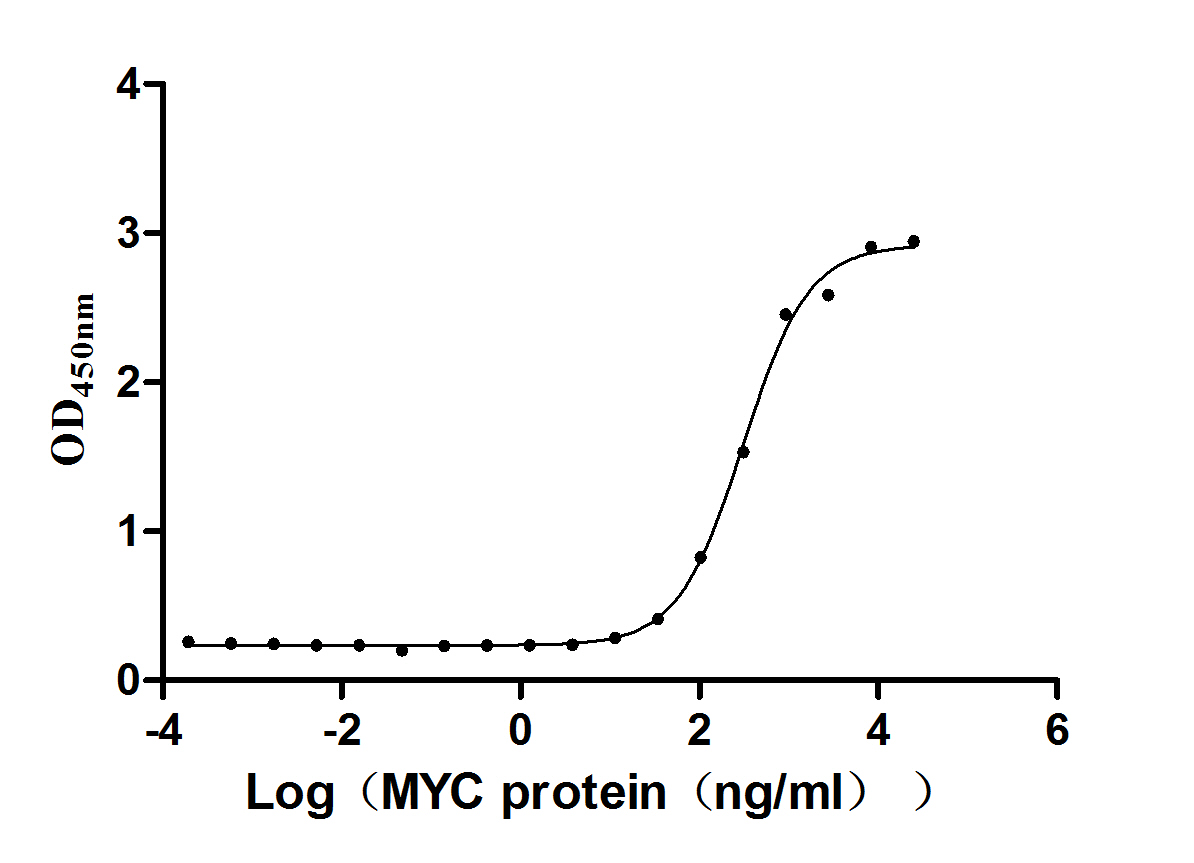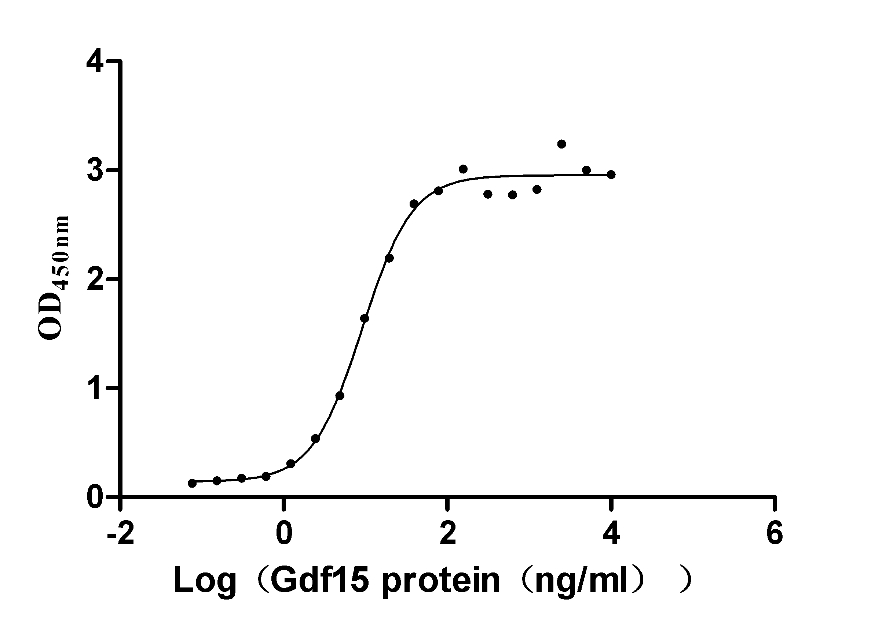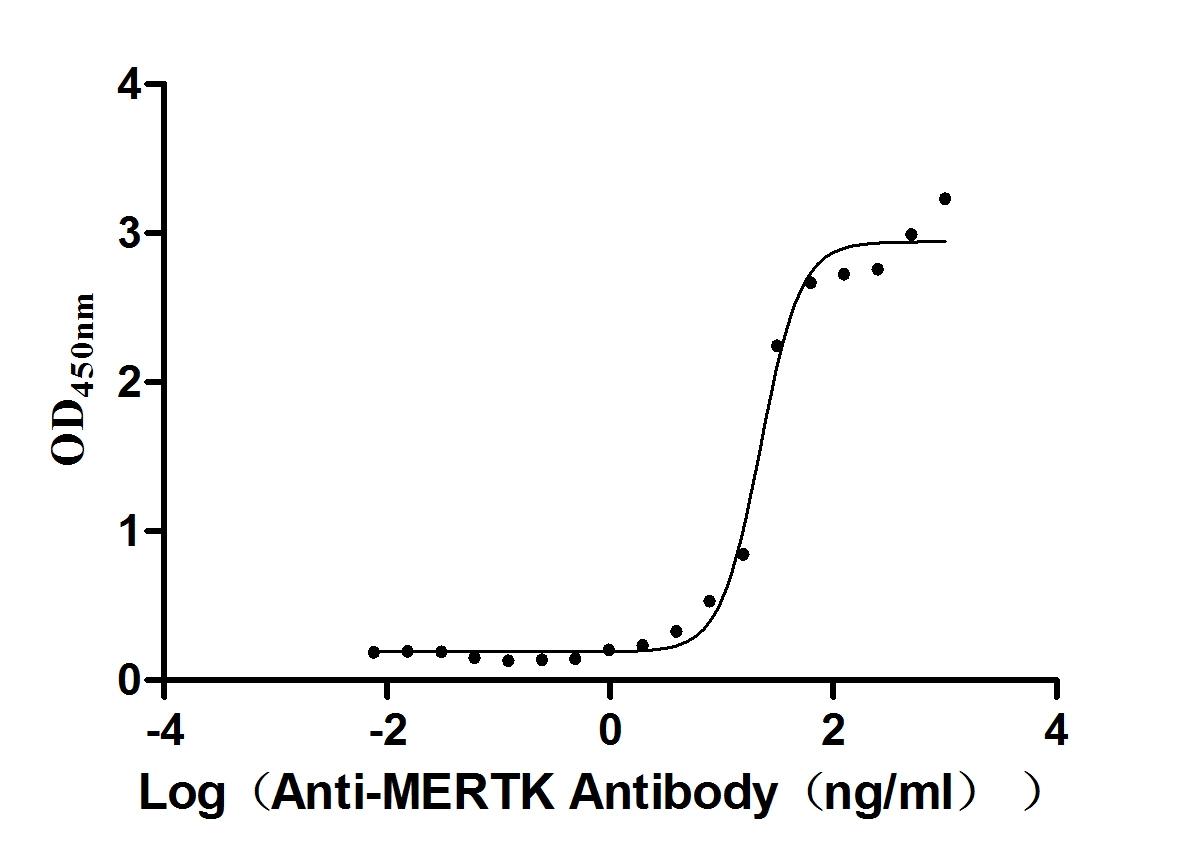Recombinant Rat Solute carrier family 15 member 1 (Slc15a1), partial
-
货号:CSB-YP021398RA
-
规格:
-
来源:Yeast
-
其他:
-
货号:CSB-EP021398RA
-
规格:
-
来源:E.coli
-
其他:
-
货号:CSB-EP021398RA-B
-
规格:
-
来源:E.coli
-
共轭:Avi-tag Biotinylated
E. coli biotin ligase (BirA) is highly specific in covalently attaching biotin to the 15 amino acid AviTag peptide. This recombinant protein was biotinylated in vivo by AviTag-BirA technology, which method is BriA catalyzes amide linkage between the biotin and the specific lysine of the AviTag.
-
其他:
-
货号:CSB-BP021398RA
-
规格:
-
来源:Baculovirus
-
其他:
-
货号:CSB-MP021398RA
-
规格:
-
来源:Mammalian cell
-
其他:
产品详情
-
纯度:>85% (SDS-PAGE)
-
基因名:Slc15a1
-
Uniprot No.:
-
别名:Slc15a1; Pept1; Solute carrier family 15 member 1; Intestinal H(+)/peptide cotransporter; Oligopeptide transporter; small intestine isoform; Peptide transporter 1; Proton-coupled dipeptide cotransporter
-
种属:Rattus norvegicus (Rat)
-
蛋白长度:Partial
-
蛋白标签:Tag type will be determined during the manufacturing process.
The tag type will be determined during production process. If you have specified tag type, please tell us and we will develop the specified tag preferentially. -
产品提供形式:Lyophilized powder
Note: We will preferentially ship the format that we have in stock, however, if you have any special requirement for the format, please remark your requirement when placing the order, we will prepare according to your demand. -
复溶:We recommend that this vial be briefly centrifuged prior to opening to bring the contents to the bottom. Please reconstitute protein in deionized sterile water to a concentration of 0.1-1.0 mg/mL.We recommend to add 5-50% of glycerol (final concentration) and aliquot for long-term storage at -20℃/-80℃. Our default final concentration of glycerol is 50%. Customers could use it as reference.
-
储存条件:Store at -20°C/-80°C upon receipt, aliquoting is necessary for mutiple use. Avoid repeated freeze-thaw cycles.
-
保质期:The shelf life is related to many factors, storage state, buffer ingredients, storage temperature and the stability of the protein itself.
Generally, the shelf life of liquid form is 6 months at -20°C/-80°C. The shelf life of lyophilized form is 12 months at -20°C/-80°C. -
货期:Delivery time may differ from different purchasing way or location, please kindly consult your local distributors for specific delivery time.Note: All of our proteins are default shipped with normal blue ice packs, if you request to ship with dry ice, please communicate with us in advance and extra fees will be charged.
-
注意事项:Repeated freezing and thawing is not recommended. Store working aliquots at 4°C for up to one week.
-
Datasheet :Please contact us to get it.
靶点详情
-
功能:Proton-coupled amino-acid transporter that transports oligopeptides of 2 to 4 amino acids with a preference for dipeptides. Primarily responsible for the absorption of dietary di- and tripeptides from the small intestinal lumen.
-
基因功能参考文献:
- Inhibition of upper small intestinal peptide transporter 1 (PepT1), the primary oligopeptide transporter in the small intestine, reverses the preabsorptive ability of upper small intestinal casein infusion to increase glucose tolerance and suppress glucose production. PMID: 29549253
- PepT1 expression was confirmed by immunofluorescence on monolayers and brush border of rat jejunal tissue. PMID: 28315445
- The expressions of PepT1 mRNA and protein were higher in ghrelin-treated group rats. PMID: 28038428
- Slc15a1 is involved in the transport of synthetic F5-peptide into seminiferous epithelium. PMID: 26537751
- Data suggest that PepT1 transports the vasoactive dipeptide Trp-His (but not His-Trp which undergoes rapid proteolysis) across the rat intestinal membrane; this mechanism may account for anti-atherosclerotic action of Trp-His as a dietary supplement. PMID: 25808120
- Nod2-Rip2-NFkappaB signaling involved in the small intestinal inflammatory injury caused by muramyl dipeptide which is transported through PepT1. PMID: 26138652
- Phe-Psi-Ala is a high-affinity, metabolically stable, non-radioactive probe for PEPT1. PMID: 25008848
- GIP via GIPR activates two signaling pathways, the cAMP pathway through Epac and the PI3K pathway through Akt, to increase the trafficking of PepT1 proteins to the apical membrane. PMID: 25377315
- In the present study, we showed that dietary inorganic phosphorus levels are important factors in the regulation of intestinal PepT1 expression and peptide absorption. PMID: 22677630
- These studies unequivocally demonstrate the presence of PEPT1 protein in healthy distal colonic epithelium in mice, rats, and humans and proved that the protein is functional and contributes to electrolyte and water handling in mice. PMID: 23660505
- Distribution is exclusively in the apical brush border of enterocytes from both prenatal and mature animals PMID: 11810321
- PepT1 expression level in the rat small intestine--highest at the lower region and lowest at the upper region in fed compared to starved rats--is the major determinant of absorption of peptide-like compounds. PMID: 12425457
- The effects of transport and uptake of PepT1 in scald rats with injection of rhGH were significantly increased . PMID: 14669333
- P. 974: "...we found that hyperthyroidism in vivo caused a decrease in the activity and expression of PEPT1 in small intestine." PMID: 15212161
- Increase in absorption of small peptides and peptide-like drugs, caused by the upregulation of intestinal PEPT1 protein, might contribute to the progression of renal failure as well as the alteration of drug pharmacokinetics. PMID: 15528259
- PepT1 shows circadian expression mediated by cAMP activation of an intronic promoter PMID: 15684415
- Products of protein digestion increase spontaneous activity of cholecystokinin-sensitive duodenal vagal afferents via mechanism involving oligopeptide transporter PepT1. PMID: 15930458
- Pept1 mRNA was not only highly expressed in small intestine, but also detectable in gonads and kidney of rats PMID: 16202478
- PPARalpha plays critical roles in fasting-induced intestinal PEPT1 expression PMID: 16751172
- The colonic PepT1 overexpression induced by bowel resection increases the transport of bacterial product fMLP and hence causes colonic inflammation PMID: 16950402
- Up-regulation of PepT1 may adaptively improve absorption of di- and tripeptides, independent of changes in the mucosal surface area PMID: 17081567
- Colitis did not alter PepT-1 substrate bioavailability despite certain modifications in PepT-1 expression profile. PMID: 17372819
- Microvilli surface area is preserved through fasting, and apical PepT1 expression increases during both metabolic fasting phases. PMID: 17638014
- Acetaldehyde due to consumption of ethanol significantly modulates PEPT1 function and thereby affects drug bioavailability. PMID: 18028524
- DBP has the ability to bind the DBP binding site located in the distal promoter region of the PEPT1 gene & induce the transcriptional activity. These findings indicate that DBP plays pivotal roles in the circadiran oscillation of PEPT1. PMID: 18583459
- Results suggest that oseltamivir is a substrate of PEPT1 and that PEPT1 is involved in its intestinal absorption. PMID: 19439487
- Gene expression and transport function of PEPT1 vary diurnally in duodenum and jejunum in temporal association with nocturnal feeding of rats. PMID: 19577760
显示更多
收起更多
-
亚细胞定位:Membrane; Multi-pass membrane protein.
-
蛋白家族:PTR2/POT transporter (TC 2.A.17) family
-
组织特异性:[Isoform 1]: Highly expressed in small intestine.; [Isoform 2]: Expression is restricted to pinealocytes.
-
数据库链接:
KEGG: rno:117261
STRING: 10116.ENSRNOP00000015890
UniGene: Rn.10500
Most popular with customers
-
Recombinant Macaca fascicularis Delta-like protein 3 (DLL3), partial (Active)
Express system: Mammalian cell
Species: Macaca fascicularis (Crab-eating macaque) (Cynomolgus monkey)
-
Recombinant Human papillomavirus type 16 Protein E7 (E7) (Active)
Express system: E.coli
Species: Human papillomavirus type 16
-
Recombinant Mouse GDNF family receptor alpha-like (Gfral), partial (Active)
Express system: Mammalian cell
Species: Mus musculus (Mouse)
-
Recombinant Human T-cell surface protein tactile (CD96), partial (Active)
Express system: Mammalian cell
Species: Homo sapiens (Human)
-
Recombinant Mouse Tyrosine-protein kinase Mer (Mertk), partial (Active)
Express system: Mammalian cell
Species: Mus musculus (Mouse)
-
Express system: Mammalian cell
Species: Homo sapiens (Human)
-
Recombinant Human Glucagon-like peptide 1 receptor (GLP1R), partial (Active)
Express system: Mammalian cell
Species: Homo sapiens (Human)
-
Recombinant Human C-C chemokine receptor type 8 (CCR8)-VLPs (Active)
Express system: Mammalian cell
Species: Homo sapiens (Human)





-AC1.jpg)














